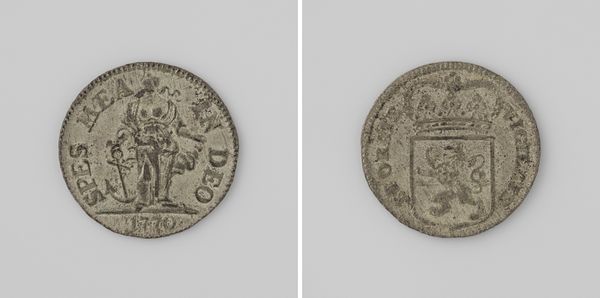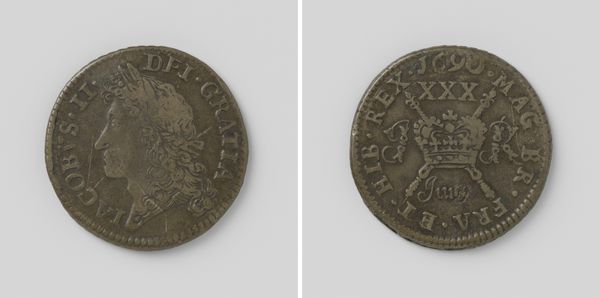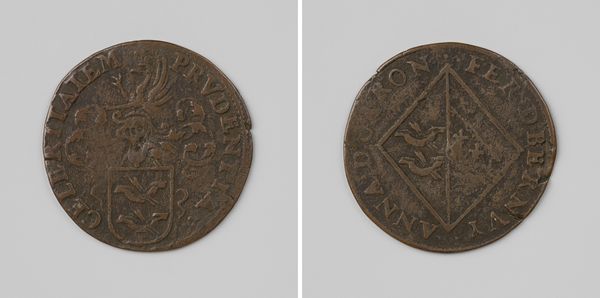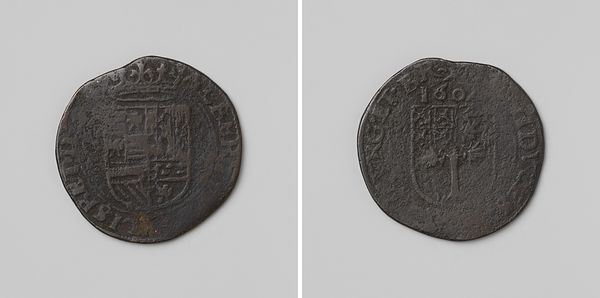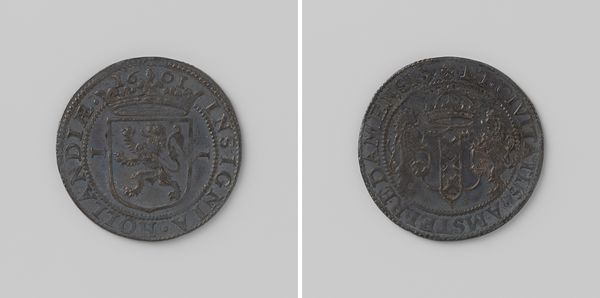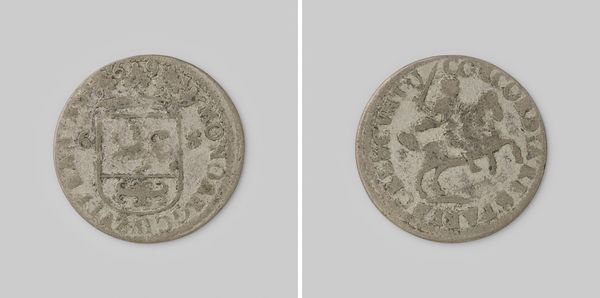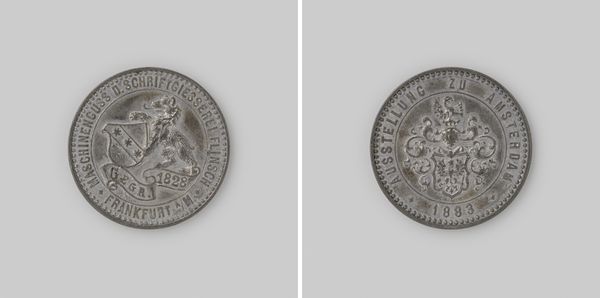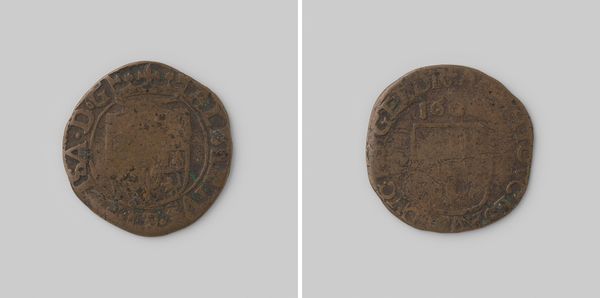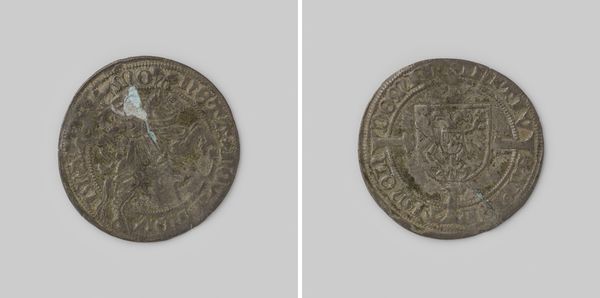
Verenigde Amsterdamse Compagnie, munt ter vervanging van de Spaanse 1/2 reaal 1601
0:00
0:00
metal, relief, engraving
#
dutch-golden-age
#
metal
#
relief
#
engraving
Dimensions: diameter 1.7 cm, weight 1.66 gr
Copyright: Rijks Museum: Open Domain
Curator: Here we have a rather fascinating artifact from 1601: a coin minted by the Verenigde Amsterdamse Compagnie, as a replacement for the Spanish 1/2 real. The coin was produced under the watch of Jacob de Jonge. Editor: It looks aged, doesn’t it? The worn edges and the dull metallic gleam give a sense of weight and history. One can’t help but imagine all the transactions it might have been part of. Curator: Precisely! Note the composition on both sides: a symmetrical heraldic design featuring a crowned shield on one side, balanced by the coat of arms of Amsterdam on the reverse. It seems a potent symbolic tool in service of trade. Editor: Indeed. I'm curious about the specific alloy used, given its function in daily trade. It certainly speaks to material conditions of the Dutch Golden Age—expanding trade routes and the demand for standardized currency that this necessitated. I also wonder what the coin makers were paid. Curator: Good questions. Now, focusing on the imagery—the lion rampant, enclosed in a shield, denotes strength and sovereignty, reflecting the burgeoning power of the Dutch Republic. Editor: To think, each of those engravings was cut by hand! I imagine the artisan painstakingly ensuring its legibility and consistent production as part of the company's visual branding. These mints signify so much physical labor, right? Curator: And there is no doubt a political subtext to the work, particularly in using a substitute coin to override Spanish influence. Still, observe the controlled symmetry—the composition of the symbols are arranged to declare its value in a specific economic situation, or as structuralists may see, reflecting underlying ideas. Editor: But considering what these artisans were accomplishing, it is essential to acknowledge how their production supported international exchange! I consider the work not just for its visual form, but as something intrinsically connected to its moment, forged for the marketplace. Curator: A compelling point. Looking at its overall effect, the controlled relief contributes to the clear dissemination of political and fiscal potency. Editor: Right. A potent symbol, tied intimately to the material means of exchange, made through skill, used to expand networks—food for thought indeed.
Comments
No comments
Be the first to comment and join the conversation on the ultimate creative platform.


